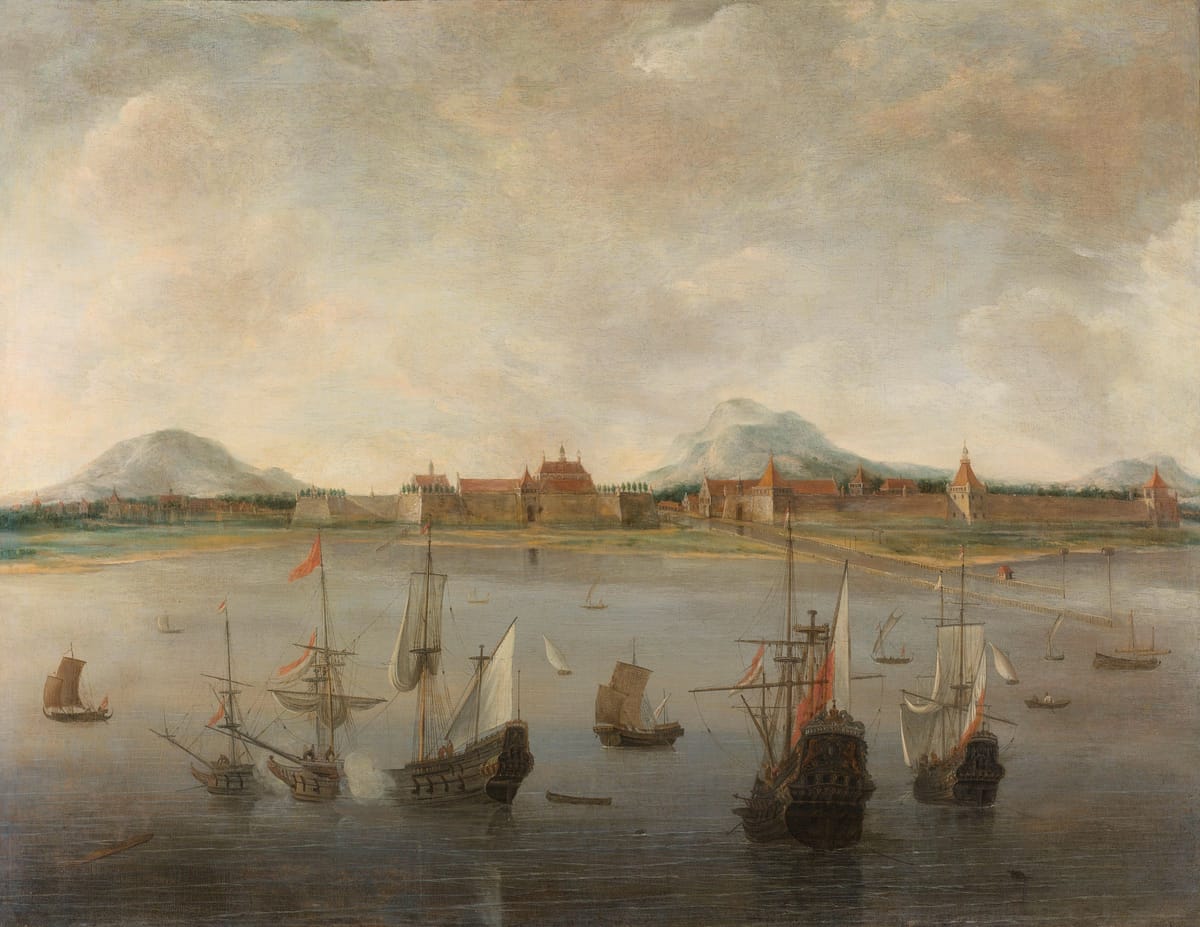Batavia

Located in the north-west of the island of Java, Jakarta is the capital and largest city of Indonesia with an estimated population of around 10 million. The population of Jakarta metropolitan area is estimated at 35 million, making it one of the largest metropolitan areas of the world.

The Dutch colonial name for the city of Jakarta was Batavia, named after the Batavi tribe that is said to have lived in the Netherlands in Roman times.

A small port city first developed in this part of Java in the fourteenth century. After conquering the Javanese port of Jakatra in 1616 and driving the local population out, the Dutch East India Company built a new city in its place. In search for a permanent base in the Indonesian Archipelago, the port was chosen because it was strategically located. The bay sheltered ships from the wind but was sailable year-round. Larger ships however had to anchor outside the port as it was too shallow let them enter.

The Dutch East India Company made Batavia its Asian headquarters and built the city in Dutch style with canals and stone city walls. To protect the city a large fort facing the sea was built (left-centre of image). The Company’s trade and warfare were coordinated from here, goods were stored in the warehouses, and ships were be repaired at the Company wharf. Batavia was Company’s central entrepôt for trade in Asia and its main link to Europe as the Company fleet from Europe arrived and departed from here. The Company’s main interest in the region was the lucrative trade of pepper, cloves, nutmeg, and mace. To purchase these goods the Company mainly imported cotton textiles from India.

Batavia however did not only rely on Company shipping. Portuguese ships connected it to Macao and Malay shipping to the wider archipelago. Chinese junks (seen drawn here) linked Batavia to China and Manila taking silver and spices and bringing tea, silk, textiles, and porcelain. In general, the migration of Chinese merchants, artisans and workers was an essential part of Batavia’s development in the early modern period.

Batavia’s population growth was halted in 1733 by the outbreak of malaria in the city. Newly constructed fisheries at the coast proved breeding grounds for the parasites. Urban development was pushed outside the city walls where manors and plantations, as seen depicted here, had been established by wealthy Batavians from the seventeenth century onwards. This shift to the outskirts and hills, as well was the relocation of the port to accommodate larger steamships in the nineteenth century, led to the decay of the Old City.
References
Feature image: Hendrick Jacobsz. Dubbels, ‘Gezicht op Batavia’, canvas oil paint, 1640-1676. Rijksmuseum Amsterdam. Link: http://hdl.handle.net/10934/RM0001.COLLECT.8333
Blussé, Leonard. Strange Company Chinese Settlers, Mestizo Women and the Dutch in VOC Batavia. ACLS Humanities E-Book. Foris Publications, 1986.
Emmer, Pieter C., and Jos J.L. Gommans. The Dutch Overseas Empire, 1600–1800. Translated by Marilyn Hedges. Cambridge: University Press, 2020.
‘Jakarta’, https://www.atlasofmutualheritage.nl/en/page/3208/jakarta(accessed 9-9-2023).
‘Batavia’, https://www.vocsite.nl/geschiedenis/handelsposten/batavia/(accessed 9-9-2023).
